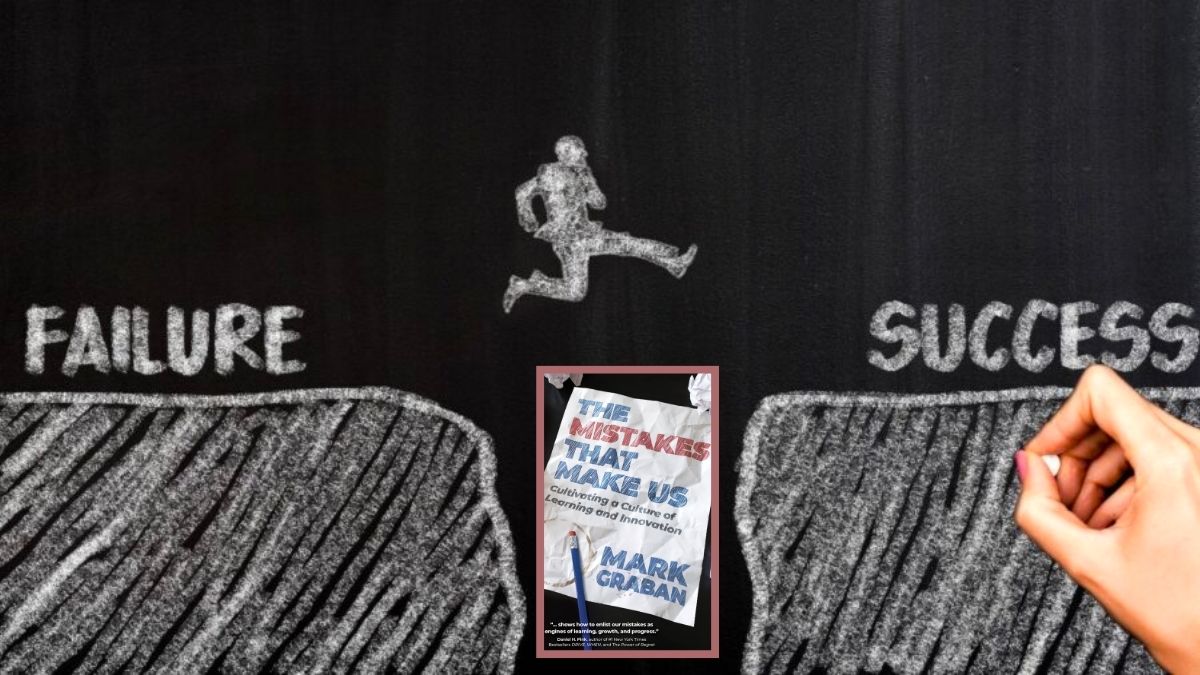In today’s dynamic business landscape, cultivating a learning culture within organizations is not just beneficial; it’s essential. “The Mistakes That Make Us: Cultivating a Culture of Learning and Innovation” by Mark Graban provides profound insights into this transformative journey. This book illustrates how embracing mistakes and continuous learning can drive innovation and success. In this blog post, we’ll explore key strategies from Graban’s book for building a robust learning culture in organizations.
Embracing Mistakes as Opportunities
One of the central themes in “The Mistakes That Make Us” is the redefinition of mistakes. In many traditional corporate environments, errors are frowned upon, often leading to a culture of fear and conservatism. However, Graban argues that mistakes are, in fact, golden opportunities for learning and growth.
To foster a learning culture, organizations must shift their perspective on errors. Instead of penalizing mistakes, leaders should encourage open discussions about them. This approach not only demystifies failure but also promotes a safe environment where employees feel comfortable taking calculated risks and experimenting with new ideas.
Implementing ‘blame-free’ post-mortem meetings after projects can help in dissecting what went wrong and, more importantly, how to improve. Such meetings should focus on the process and systems rather than individual shortcomings, aligning with the Lean principle of continuous improvement.
Creating a Feedback-Rich Environment
Feedback is the cornerstone of learning. In “The Mistakes That Make Us,” the importance of continuous feedback loops is emphasized. Organizations thriving on learning cultures are those where feedback is frequent, constructive, and a two-way street.
Leaders need to model this behavior by regularly seeking feedback about their own performance and decisions. This sets a precedent, making it normal and expected for everyone to seek and provide feedback.
Implementing tools and platforms where employees can anonymously give feedback can also be beneficial. Such platforms ensure that employees feel safe to express honest opinions without fear of repercussions. Regular town hall meetings, employee surveys, and open-door policies further reinforce this culture.
Encouraging Lifelong Learning
A learning culture is incomplete without the encouragement of lifelong learning. Organizations should invest in their employees’ continuous development, both professionally and personally. This can be achieved through various methods, such as offering access to online courses, organizing workshops, and providing tuition reimbursement for further education.
“The Mistakes That Make Us” also suggests creating internal mentorship programs. Such initiatives not only facilitate knowledge sharing but also strengthen inter-departmental relationships and collaboration. Encouraging employees to attend industry conferences and seminars can also broaden their horizons and bring fresh ideas into the organization.
Leveraging Technology for Learning
In the digital age, technology plays a pivotal role in fostering a learning culture. Digital platforms can provide access to a wealth of knowledge and resources. Organizations should leverage e-learning platforms, virtual training sessions, and online knowledge repositories to facilitate easy access to learning materials.
Moreover, social media and internal communication tools can be used to share learning resources, celebrate employees’ achievements, and disseminate key learnings from projects or training sessions.
Creating a Supportive Leadership Framework
Leadership commitment is crucial in nurturing a learning culture. Leaders must be champions of learning, embodying the principles laid out in “The Mistakes That Make Us.” This means being approachable, encouraging curiosity, and being willing to admit their own mistakes.
Leaders should also be facilitators, providing the necessary resources and support for learning initiatives. This includes allocating time during work hours for learning activities and recognizing and rewarding learning achievements.
Conclusion
Building a learning culture in organizations is a journey that requires commitment, openness, and strategic planning. By embracing mistakes as learning opportunities, creating a feedback-rich environment, encouraging lifelong learning, leveraging technology, and fostering supportive leadership, organizations can cultivate a culture that thrives on learning and innovation. As “The Mistakes That Make Us” vividly illustrates, such a culture is not just about accumulating knowledge; it’s about transforming perspectives, processes, and ultimately, performance. Let’s embark on this journey and unlock the full potential of our organizations and our people.



